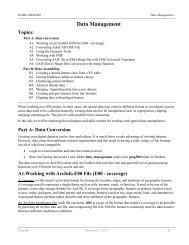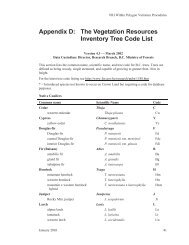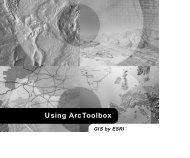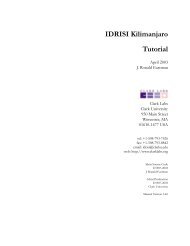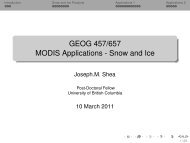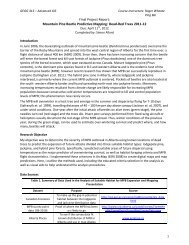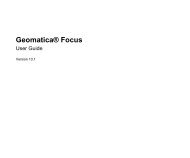Understanding Map Projections
Understanding Map Projections
Understanding Map Projections
You also want an ePaper? Increase the reach of your titles
YUMPU automatically turns print PDFs into web optimized ePapers that Google loves.
VAN DER GRINTEN I<br />
Distance<br />
Scale along the equator is correct.<br />
LIMITATIONS<br />
Can represent the world, but the most accurate<br />
representation is between the 75th parallels of<br />
latitude.<br />
USES AND APPLICATIONS<br />
Used for world maps.<br />
Formerly the standard world map projection of the<br />
National Geographic Society.<br />
The central meridian is 56° E.<br />
DESCRIPTION<br />
This projection is similar to the Mercator projection<br />
except that it portrays the world with a curved<br />
graticule. The overall effect is that area is distorted<br />
less than on a Mercator projection, and the shape is<br />
distorted less than on equal area projections.<br />
PROJECTION METHOD<br />
The Van der Grinten I projection is a compromise<br />
projection and is not in one of the more traditional<br />
classifications.<br />
LINEAR GRATICULES<br />
The equator and the central meridian of the<br />
projection.<br />
PROPERTIES<br />
Shape<br />
Distortion increases from the equator to the poles.<br />
Area<br />
Minimal distortion along the equator and extreme<br />
distortion in the polar regions.<br />
Direction<br />
Local angles are correct only at the center.<br />
94 • <strong>Understanding</strong> <strong>Map</strong> <strong>Projections</strong>




